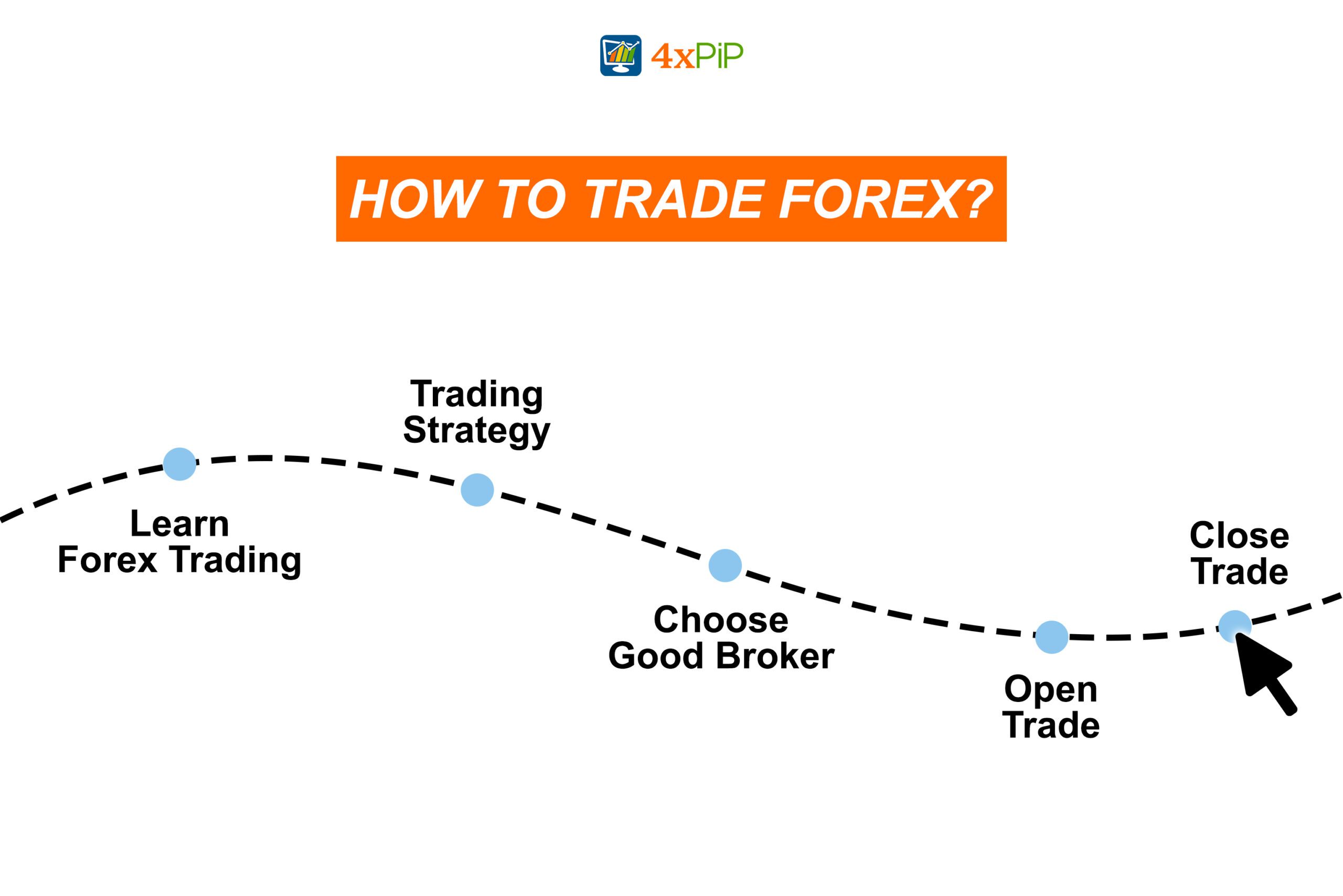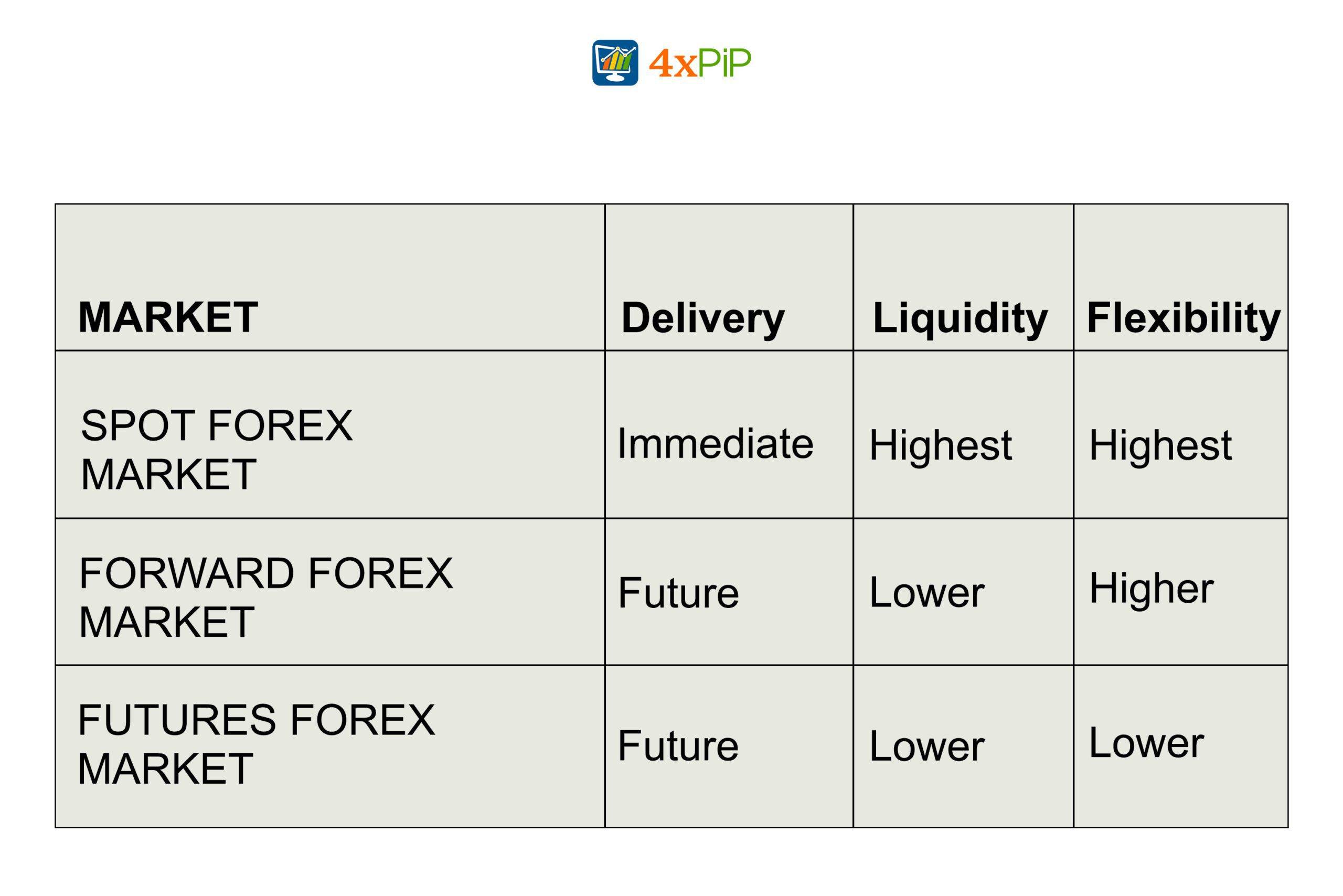In this article, 4xPip provides its readers with comprehensive and detailed information about foreign exchange trading. Foreign exchange trading is also called forex trading. 4xPip is one of the best websites that automate forex trading and deliver auto trading robots such as indicators and expert advisors EA. It works on the platform called Metatrader with versions MT4 and MT5. 4xPip also guides its readers and new traders in trading. For more information, you can visit our website at 4xPip.
Forex Trading: How to Trade Forex?

The foreign exchange market (FX or forex) is the world’s largest and most liquid financial market. It is where currencies are traded, and it has a daily trading volume of over \$7.5 trillion. The FX market is used for a variety of purposes, including international trade, currency speculation, and hedging against risk.
The FX market is open 24 hours a day, five days a week. This is because different trading centers around the world are active at different times. The major trading centers include London, New York, Tokyo, and Singapore.
Engaging in foreign exchange market activities involves the purchase or sale of one currency in return for another. The primary aim of this trade is to capitalize on fluctuations in the exchange rates between the two currencies. To partake in forex trading, it is essential to initiate the process by establishing a trading account through a broker who grants access to the FX market. Once the account is set up, it becomes necessary to deposit funds into the account to facilitate trading endeavors.
Upon successfully funding the trading account, you can commence trading by executing either buy or sell orders for various currency pairs. These orders are facilitated using the broker’s trading platform, which offers real-time data on pricing and comprehensive charts. Attaining success in forex trading demands the formulation of a well-defined trading strategy that factors in elements such as market conditions, impactful news events, and meticulous chart analysis. Transactions are measured in lots, with the standard lot representing 100,000 units of the base currency (the first currency in the pair). For instance, placing a buy order for USD/CAD signifies a wager on the strengthening of the U.S. dollar against the Canadian dollar, classifying it as a long position. Conversely, initiating a sell order for USD/CAD signifies a prediction of the Canadian dollar’s appreciation in comparison to the U.S. dollar, representing a short position.
In the realm of foreign exchange trading, practitioners often rely on technical analysis as a guiding principle, frequently supplemented by fundamental analysis to evaluate the comparative robustness of global economies. Furthermore, prudently managing risk entails the implementation of stop-loss orders and the careful sizing of trading positions. Before entering a trade, it is crucial to ascertain both your entry point and the predetermined exit levels for either securing profits or curbing losses. While forex trading presents challenges, adept comprehension and discipline can pave the way for a gratifying and lucrative experience.
Step-by-Step Guide to Trade Forex:
Step 1: Research and choose a broker:
The first step is to find a broker that offers forex trading accounts. If your current broker supports FX trading and you have an approved margin agreement, you can skip ahead and start trading. If not, you will need to compare different FX brokers based on their platform capabilities, regulatory compliance, fees, margin rates, and customer support.
Some factors to consider when choosing a forex broker:
Regulatory compliance: Make sure the broker is regulated by a reputable financial authority. This will help to protect your money in case of problems.
Fees: Compare the fees charged by different brokers. These fees can include commissions, spreads, and overnight fees.
Platform capabilities: Make sure the broker offers a platform that meets your needs. Some platforms are more advanced than others and offer more features.
Margin rates: The margin rate is the amount of money you need to deposit to open a position. Lower margin rates can give you more leverage, which can magnify your profits but also your losses.
Customer support: Make sure the broker offers good customer support. This is important if you have any questions or problems.
Step 2: Open a Forex trading account and verify your identity:
To open a Forex trading account, you will need to provide the following information: Your name and address, Your tax ID number, Some financial background information, and Your investment goals.
You will also need to answer some questions about your finances and investment goals as part of “know your client” (KYC) compliance. This is a process that financial institutions use to verify your identity and understand your financial situation.
Your broker will also need to verify your identity and address. This is typically done by requiring you to provide a copy of your passport, driver’s license, or national ID, as well as a copy of a utility bill or bank statement.
The broker will also request some financial and tax information from you. This information is required to comply with U.S. government laws and Commodity Futures Trading Commission (CFTC) rules.
Step 3: Fund your forex account:
Once your forex trading account has been approved, you will need to fund it to start trading. The amount of money you need to deposit will vary depending on the broker and the type of account you open. Some brokers allow you to start trading with as little as \$100, while others require a larger deposit.
Step 4: Research currencies and identify trading opportunities:

Once your Forex trading account has been funded, you can start researching currencies and identifying trading opportunities. There are two main approaches to forex trading: fundamental analysis and technical analysis.
Fundamental analysis is based on the economic fundamentals of the countries whose currencies you are trading. This includes factors such as interest rates, inflation, and economic growth. Fundamental analysis can be a good way to identify long-term trends in the currency market.
Technical analysis is based on the historical price movements of the currencies you are trading. This includes factors such as trend lines, channels, breakouts, patterns, and support and resistance levels. Technical analysis can be a good way to identify short-term trading opportunities.
The best approach to forex trading will vary depending on your trading style and risk tolerance. If you are a beginner, it is a good idea to start with fundamental analysis and then gradually incorporate technical analysis into your trading.
Once you have identified a trading opportunity, you need to decide how much money you want to risk on the trade. This is called your position size. Your position size should be based on your risk tolerance and your trading goals.
It is also important to have a trading plan. This is a set of rules that you will follow when you are trading. Your trading plan should include your entry and exit points, your stop-loss and take-profit levels, and your risk-reward ratio.
By following these steps, you can increase your chances of success in forex trading.
Step 5: Size up your first forex trade:
Before you make your first forex trade, it is important to understand how much capital you have available and the specific leverage available to you for your chosen currency pair. Leverage is a financial tool that allows you to control a larger position with a smaller amount of money. However, it is important to remember that leverage can also magnify your losses.
The 1% rule is a good rule of thumb for new forex investors. This rule states that you should only risk 1% of your total account value on any single trade. This helps to protect your capital and ensures that you are not risking too much on any one trade.
To calculate the amount of money you can risk on a trade, you can use the following formula:
Risk = Account Value * 1%:
For example, if you have a $10,000 account, you can risk $100 on a single trade.
Once you have determined the amount of money you are willing to risk, you need to set a stop-loss order. A stop-loss order is an order to sell a currency pair if it reaches a certain price. This helps to protect your profits and losses by limiting your losses if the market moves against you.
You should also set a take-profit order. A take-profit order is an order to sell a currency pair if it reaches a certain price. This helps you to lock in your profits if the market moves in your Favor.
Once you have set your stop-loss and take-profit orders, you are ready to place your trade.
Step 6: Monitor and manage your position:
Once you have placed your trade, it is important to monitor your position and manage it accordingly. This means keeping an eye on the market and making sure that your stop-loss and take-profit orders are still in place.
If the market moves against you and your stop-loss order is triggered, you will need to sell your currency pair to limit your losses. If the market moves in your Favor and your take-profit order is triggered, you can sell your currency pair to lock in your profits.
You should also be prepared to adjust your stop-loss and take-profit orders as the market moves. This is because the market is constantly changing, and your original orders may no longer be appropriate.
Types of Forex Markets:

- Spot Forex Market:
The spot forex market is where currencies are traded for immediate delivery. This means that the exchange of currencies takes place two days after the trade is made. The spot forex market is the world’s largest and most liquid financial market, with an average daily trading volume of over $5 trillion.
- Forward Forex Market:
The forward forex market is where currencies are traded for future delivery. This means that the exchange of currencies takes place on a specific date in the future. The forward forex market is used by businesses and individuals to hedge against currency risk. For example, a business that imports goods from a foreign country may use the forward forex market to lock in the exchange rate for the future, so that they know how much they will have to pay in their currency.
- Futures Forex Market:
The futures forex market is like the forward forex market, but the contracts are standardized and traded on regulated exchanges. This makes the futures forex market more liquid than the forward forex market, but it also means that there is less flexibility.
Here is a table summarizing the key differences between the three markets:
|
Market |
Delivery |
Liquidity |
Flexibility |
|
Spot forex market |
Immediate |
Highest |
Highest |
|
Forward forex market |
Future |
Lower |
Higher |
|
Futures forex market |
Future |
Lower |
Lower |
Once you learn trading along with strategies and techniques, you can automate your trading to save time. In the meantime, you can have fun and enjoy your day with your friends and family. For automating robots, do visit our website and get your trading robots! You can also contact our support team to get free guidance at [email protected].
Summary:
Forex trading is the buying and selling of currencies. Notably, the forex market is the world’s largest and most liquid financial market. When it comes to forex trading, there are two main approaches: fundamental analysis and technical analysis. However, it’s important to recognize that the best approach to forex trading will vary depending on your trading style and risk tolerance. Firstly, you need to understand how much capital you have available and the specific leverage available to you for your chosen currency pair. Additionally, setting a stop-loss order and a take-profit order is crucial to limit your losses and lock in your profits. Lastly, it’s worth noting that the two main types of forex markets are the spot forex market and the forward forex market.





